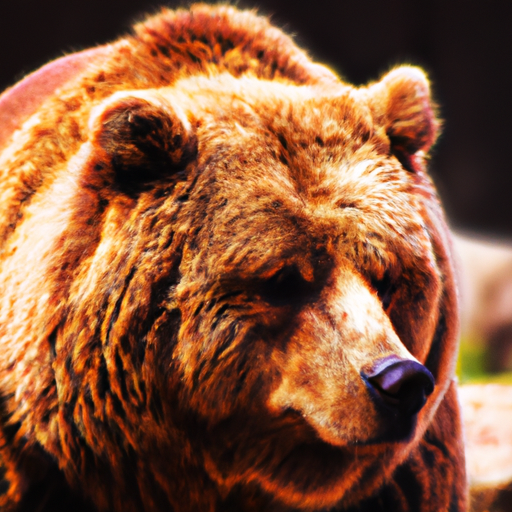 Introduction:
Introduction:
Animals, the fascinating beings that grace our planet, have captivated our attention and curiosity for centuries. From the smallest insects to the magnificent mammals, the animal kingdom is a tapestry of diverse and wondrous creatures. In this extensive article, we embark on a journey through the intricate web of similarities and differences that exist among these remarkable beings. Prepare yourself for an expedition into the animal world, where we will explore various aspects such as anatomy, behavior, reproduction, and habitat.
Section 1: Anatomy
1.1 Skeletal System:
Animals, regardless of their size or species, possess a skeletal system that provides structural support and protection. While vertebrates, including humans, birds, and fish, have an internal bony skeleton, invertebrates, such as insects, worms, and jellyfish, lack bones and rely on exoskeletons or hydrostatic pressure for support.
1.2 Respiratory System:
The respiratory systems of animals display remarkable diversity. Some animals, like humans, possess lungs for breathing air, while others, such as fish, use gills to extract oxygen from water. Additionally, certain creatures, like earthworms, breathe through their skin.
1.3 Digestive System:
Animals exhibit various digestive systems tailored to their dietary needs. Herbivores, like cows and horses, possess specialized digestive systems to break down plant matter, while carnivores, like lions and tigers, have shorter digestive tracts adapted for meat consumption. Omnivores, like bears and humans, have versatile digestive systems capable of processing both plant and animal matter.
Section 2: Behavior
2.1 Social Structures:
Animals exhibit an incredible range of social structures. Some, like ants and bees, live in highly organized colonies with specialized roles, while others, such as lions and wolves, form family units known as prides and packs, respectively. In contrast, solitary animals like tigers and polar bears prefer to live and hunt alone.
2.2 Communication:
Animals communicate in diverse ways, from vocalizations and body language to chemical signals and pheromones. While birds communicate through songs and calls, dolphins use clicks and whistles. Elephants, known for their complex communication, employ low-frequency rumbles that can travel long distances.
2.3 Migration:
Migration is a behavior observed in many animal species. Birds, such as swallows, undertake long-distance journeys to find favorable breeding and feeding grounds. Similarly, wildebeests in Africa migrate in search of greener pastures. Marine creatures like whales and sea turtles navigate vast distances to mate and reproduce.
Section 3: Reproduction
3.1 Reproductive Strategies:
Animals employ various reproductive strategies, including sexual and asexual reproduction. While most animals reproduce sexually, where offspring inherit traits from two parents, some organisms, like bacteria and certain reptiles, can reproduce asexually through processes such as binary fission or parthenogenesis.
3.2 Courtship Rituals:
Courtship rituals play a vital role in the reproductive success of many animals. Peacocks display their extravagant plumage to attract mates, while birds like hummingbirds perform intricate aerial displays. Male pufferfish create elaborate sand designs to impress females, showcasing their artistic abilities.
3.3 Parental Care:
Parental care varies significantly among animal species. Some animals, like crocodiles and turtles, lay their eggs and abandon them, while others, such as penguins and seahorses, exhibit extensive parental care, including incubation and nurturing of their young.
Section 4: Habitat
4.1 Terrestrial Habitats:
Animals have adapted to diverse terrestrial habitats. Desert-dwelling creatures like camels possess physiological adaptations to conserve water, while animals in the Arctic, like polar bears and Arctic foxes, have thick fur and blubber to withstand extreme cold. Equally remarkable are rainforest inhabitants, with their vibrant colors and unique adaptations to life in the dense canopy.
4.2 Aquatic Habitats:
Aquatic habitats, whether freshwater or marine, host an array of animals with specialized adaptations. Whales and dolphins possess streamlined bodies and flippers for efficient swimming, while fish have gills for extracting oxygen from water. In contrast, animals like seals and penguins employ a combination of land and water adaptations.
4.3 Aerial Habitats:
Birds, bats, and insects dominate aerial habitats. Birds, with their hollow bones and wings, have perfected the art of flight. Bats, the only mammals capable of sustained flight, navigate using echolocation. Insects, such as butterflies and dragonflies, display intricate wing patterns and adaptations for flight.
Conclusion:
Animals, with their astonishing diversity, continually remind us of the wonders of nature. Through exploring their anatomy, behavior, reproduction, and habitats, we gain a deeper understanding of the intricate similarities and differences that define these remarkable creatures. The animal kingdom serves as a testament to the marvels of evolution and adaptation, reminding us of the interconnectedness and beauty of life on Earth.
